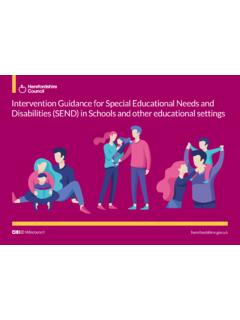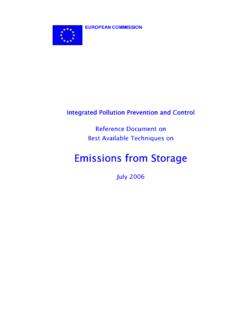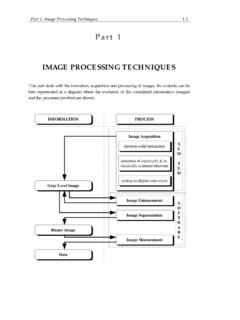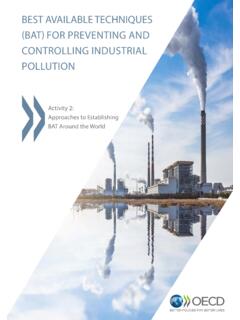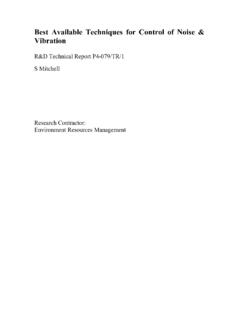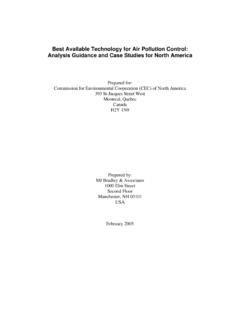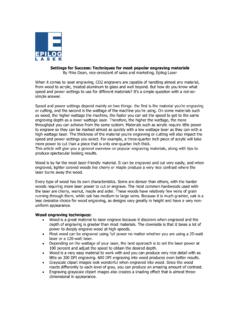Transcription of Best practice community engagement techniques
1 Neighbourhood Planning Guidance Note 12 best practice community engagement techniques April 2013 - Revised June 2015 community engagement is the active participation of local residents and community groups in the decisions that affect their lives. This guidance note explains the benefits and principles for effective community communication, plus a range of consultation methods that can be used for engagement . This document is copyright of Herefordshire Council, please contact the Neighbourhood Planning team if you wish to reuse it in whole or part. Introduction For the purpose of this guidance it is important to outline an understanding of the terms community and engagement . community refers to a group of people that share a common place (for example, your village, your parish(es) or within your Neighbourhood Area); a common interest (for example, an interest in the environment, sport and health and social care); or a common identity (normally demographic characteristics for example, age).
2 There are also individuals and groups with common needs. engagement refers to a range of interactions which are suitable for all parties involved. It could range from simple information giving through to supporting community activity. As appendix 1 shows, it spans a range of activities. Benefits of community engagement Well run community engagement will bring extensive benefits to the progression of your Neighbourhood Development Plan and will encourage the involvement of local residents, groups, businesses, developers and a number of agencies. Benefits of meaningful, two way community engagement include: Trust it builds trust between the parish council(s), local people, developers and service providers. Opportunity to influence it gives local people and communities the opportunity to influence decisions that will affect them.
3 Knowledge of local issues - it taps into local knowledge and expertise and makes sure your Neighbourhood Plan is as well informed as possible by the people who know its problems best ; your local inhabitants. Removing barriers it removes physical, language or social barriers to communities getting access to information or voicing needs or opinions. community understanding it enables everyone to know about and understand how complex some of the local issues may be. This will help people understand how difficult it can be to find solutions and help manage their expectations. It also helps your community to understand the neighbourhood planning process and the progress of your plan. Satisfaction it increases the satisfaction with the progress of the plan and the community s ability to shape that future environment.
4 A sense of ownership it supports community spirit and encourages the local people to take control of their own neighbourhoods, which will increase the chances of a successful outcome. However, some people involved in community engagement have highlighted potential drawbacks. For example, well run community engagement can be very resource intensive in both time and money. It can also be difficult to manage the different views of the respondents. Importance of recording yourcommunity engagement Consultation will form a very important part of your Neighbourhood Development Plan. Your plan should be a community led document and greater community involvement will assist the progress of your plan through the process and importantly the referendum. A consultation statement will be required as part of the submission of your Neighbourhood Development Plan.
5 The statement will need to outline the range of consultations which have been undertaken and how the development of your plan has responded to the comments received. Separate guidance is available entitled Writing a consultation statement - guidance note 14. 10 Principles for effectivecommunity engagement The following principles for effective community engagement provide a useful starting point for making your consultation event work. The engagement is effectively designed so that it will make a difference. Encourage and enable everyone affected to be involved. best practice community engagement techniques Plan its delivery in a timely and appropriate way. Work with relevant partner organisations. Information should be jargon free, appropriate and understandable.
6 Make it easier for people to take part. Enable people to take part effectively. engagement is given the right resources & support to be effective. People are told the impact of their contribution Reflect on past experiences to improve your next round of consultation and engagement . Good community engagement can help create individuals that are active and engaged and who are resourceful, gifted and creative. Likewise, good community engagement can help parishes to be seen by their community as readily and enthusiastically responding to their local communities desire for involvement and collaboration. Reaching all sectors of thecommunity Neighbourhood planning should be fully inclusive within the community . Everyone should be given an equal right to have their views heard and respected.
7 Good community engagement can build new relationships and links, and reinforce existing ones. Therefore, some thought should be given to the best way to reach wider groups and remove barriers to those who are traditionally under-represented in your parish issues and meetings. This will include those with differing views and those who often do not get their voices heard such as younger people, people living in remote rural areas or those whose first language may not be English. Do not just contact those people who you know or who you think will agree with your views. Make sure that the whole community is aware of your intention to develop a Neighbourhood Development Plan. Ensure that you are realistic about how and when you can engage people. Consultations make considerable demands on both the organisers and the participants.
8 Many people within your area will have busy lives which makes attendance at meetings difficult. Consider the timing of consultations to ensure the widest range of people can be involved. Identify opportunities to connect with other events within the area; this will save resources and time on your part and ensure you reach a wider audience. Appropriate communicationtechniques Communication techniques can be divided into the direct and indirect. Direct method means face-to-face, letters, email or telephone conversations with individuals. Indirect methods could include leaflets, advertising, radio programmes, articles in newspapers and press reports. These are indirect because they do not involve any direct contact between the person giving the message and the person receiving it. The influence of indirect communications is always harder to quantify and may rest as much in a change of general atmosphere as in its specifi c influence on individuals.
9 Some members of the community may feel apprehensive about being involved in large public meetings and expressing their views in a public arena, especially if they do not have a great deal of experience in that style of meeting. Open Space meetings would allow the participants to create their own agenda and discussions in a less formal setting than a public meeting. Essentially people write down or suggest issues at the start of the meeting and then form smaller groups with people of similar concerns, to talk about the opportunities and way forward. Participants are given the opportunity to move between discussion groups and take part in as many or as few as they feel comfortable with. To organise an open space meeting you need to: Send an open invitation to your community , that explains the purpose of the meeting Arrange the meeting chairs into a circle Provide a bulletin board or graffiti wall for participants to raise issues and offer suggestions best practice community engagement techniques Provide breakout spaces where participants can move freely between discussion/topic groups The outcomes from the meeting can then be collated and fed back to the whole group.
10 See appendix 2, a community technique method matrix, which will help you think about various consultation methods, and determine which one is the best method to use at each stage when producing your plan. It is essential that the content of your Neighbourhood Development Plan represents the views of the wider community , not just those of the project group. In developing your plan there should be a two-way flow of information between the project group and the wider community . A range of consultation methods that could be used are highlighted below: Public meetings -A public meeting is open to all, offering an opportunity for people to raise issues and ask questions, and be given answers that can be heard by others in the room. Public meetings are a good way to fl oat ideas and explore possible proposals before they are formalised.
